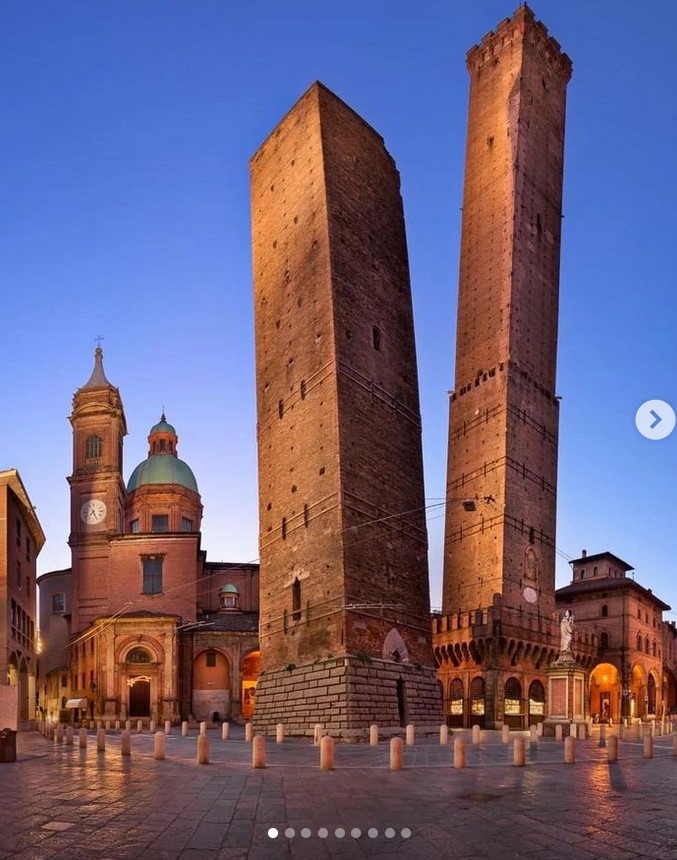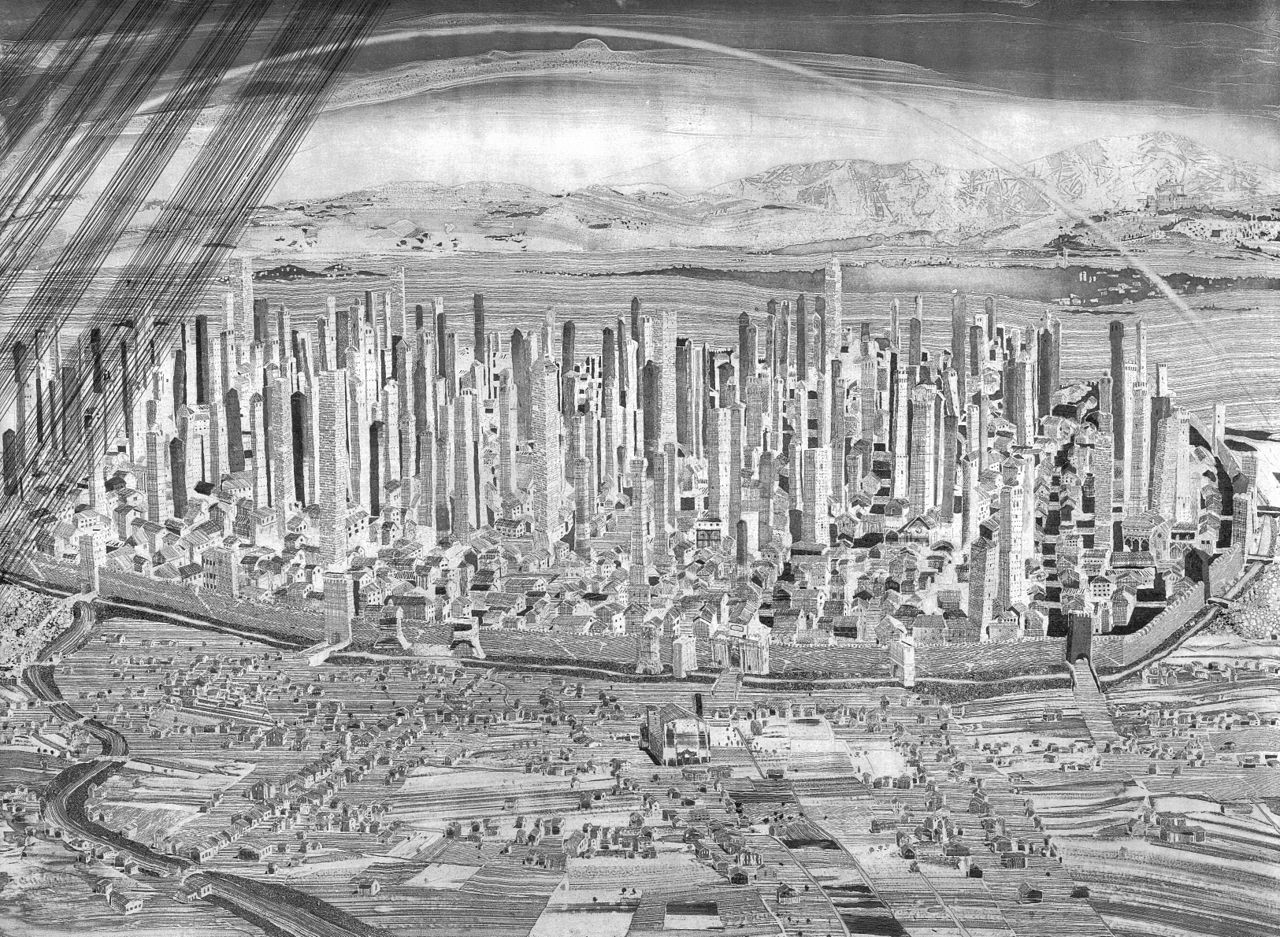Intermarkets' Privacy Policy
Donate to Ace of Spades HQ!
aceofspadeshq at gee mail.com
Buck:
buck.throckmorton at protonmail.com
CBD:
cbd at cutjibnewsletter.com
joe mannix:
mannix2024 at proton.me
MisHum:
petmorons at gee mail.com
J.J. Sefton:
sefton at cutjibnewsletter.com
Christmas Overnight Open Thread - December 25, 2025 [Doof]
Christmas Cafe
Christmas is For the Dogs Open Thread
Christmas Cookies Open Thread
Safe Travels Open Thread
Ghosts of Christmas Past Open Thread
Christmas Market Open Thread
Hep Jazzy Christmas Yule Log Open Thread
The Morning Rant
Jim Sunk New Dawn 2025
Jewells45 2025
Bandersnatch 2024
GnuBreed 2024
Captain Hate 2023
moon_over_vermont 2023
westminsterdogshow 2023
Ann Wilson(Empire1) 2022
Dave In Texas 2022
Jesse in D.C. 2022
OregonMuse 2022
redc1c4 2021
Tami 2021
Chavez the Hugo 2020
Ibguy 2020
Rickl 2019
Joffen 2014
maildrop62 at proton dot me
TBD
Medieval Manhattan Cafe

Two of the remaining medieval towers of Bologna,
by @ansharphoto
Video of the towers in the eighth "slide" here
Medieval Bologna was an interesting place. The wealthy got into a tower-building craze -- the towers actually just being expensive homes, or castles, if you like -- and the city featured more than 100 of them. It was virtually a city of skyscrapers. Well, 100-150 foot skyscrapers.

Medieval Bologna, full of towers,
as imagined by modern engraver Toni Pecoraro (b. 1958, Agrigento, Sicily).
See, I'm not lying. Wikipedia says so and you know they never lie, nope, not about anything.
Between the 12th and the 13th century, Bologna was a city full of towers. Almost all the towers were tall (the highest being 97m), defensive stone towers. Besides the towers, there are still some fortified gateways (torresotti) that correspond to the gates of the 12th-century city wall (Mura dei torresotti or Cerchia dei Mille), which itself has been almost completely destroyed.The reasons for the construction of so many towers are not clear. One hypothesis is that the richest families used them for offensive/defensive purposes during the period of the Investiture Controversy.
In the 13th century, many towers were taken down or demolished, and others simply collapsed. Many towers have subsequently been utilized in one way or the other: as prison, city tower, shop or residential building. Still, the towers remained a famous sight of Bologna throughout the later periods; even Dante mentioned some of the towers in his Inferno. The last demolitions took place during the 20th century, according to an ambitious, but retrospectively unfortunate, restructuring plan for the city; the Artenisi Tower and the Riccadonna Tower at the Mercato di mezzo were demolished in 1917.
Fewer than twenty towers can still be seen in today's Bologna. Among the remaining ones are the Azzoguidi Tower, also called Altabella (with a height of 61 m), the Prendiparte Tower, called Coronata (60 m), the Scappi Tower (39 m), Uguzzoni Tower (32 m), Guidozagni Tower, Galluzzi Tower, and the famous Two Towers: the Asinelli Tower (97 m) and the Garisenda Tower (48 m).
...
The towers must actually have crowded Bologna in the Middle Ages and there has been considerable debate about their peak number before the first ones were demolished to avoid collapse or for other reasons.
The first historian to study the towers of Bologna in a systematic way was Count Giovanni Gozzadini, a senator of the Italian kingdom in the 19th century, who studied the city's history intensively, not least to raise the prestige of his home town in the context of the now united Italy. He based his analysis mostly on the civic archives of real estate deeds, attempting to arrive at a reliable number of towers on the basis of documented ownership changes. His approach resulted in the extraordinary number of 180 towers, an enormous amount considering the size and resources of medieval Bologna.
More recent studies pointed out that Gozzadini's methodology might have led to multiple counts of buildings, which could have been referred to in legal documents by different names, depending on the name of the family who actually owned it at a given moment. More recent estimates reduced therefore the number to a total between 80 and 100, where not all towers existed at the same time.
I choose to believe "more than 100." Based on the fact that I already typed that and don't want to edit it.
Medievalism buff/RPG geek Shadiversity talks about the "City of Castles" here.
Here's a video about them, with images of the extant towers. He tells an interesting, bloody story at 2:18. Not sure I buy the arrows remaining to this day. But, print the legend I guess.
Making dinner straight from the farm, in Sicily.
Introducing a friend to your baby.
What a little gentleman. Whoops, no, check the videotape, he's a straight-up cad!
The second video here is nice.
This idiot, who is probably driving a stolen car, seem to have never driven a car except in GTA, and on easy mode, too.
I think this raft is being towed by a snowmobile. They take a fun spill.
This is the luckiest man alive. Except for the heart attack and coma. But apart from that: Luckiest man in the world.
Gals love primping themselves in the bathroom together.
Oh my goodness, this dog has no one to play fetch with so he throws the ball off a bridge and then goes to fetch it!
Monkey steals man's glasses, and then a zoo worker has to pay the monkey off to get the glasses back. They know this just encourages the thievery, don't they?
The continuing legend of Scott Sterling, the man with the golden nose:
Biden's Dog sniffs a whole lotta malarkey, : "And now off to visit my MIL with Mrs. BD. No ri ..."
Biden's Dog sniffs a whole lotta malarkey, : "Wow! Look at "Biden's Dog sniffs a whole lotta mal ..."
Skip : "I'm getting up ..."
Biden's Dog sniffs a whole lotta malarkey, : "G'Day everyone Posted by: Skip at December 26, ..."
Comrade Flounder, Disinformation Demon: "327 I had s Stretch Armstrong. Posted by: Boss ..."
m: "Wow! Look at "Biden's Dog sniffs a whole lotta mal ..."
Skip : "G'Day everyone ..."
Biden's Dog sniffs a whole lotta malarkey, : "BOING! ..."
m: "Pixy's up! ..."
m: "Posted by: SATAN CLAWS heh ..."
Romeo13: "387 Brandon Claus? Posted by: Yudhishthira's Dice ..."
Christmas Overnight Open Thread - December 25, 2025 [Doof]
Christmas Cafe
Christmas is For the Dogs Open Thread
Christmas Cookies Open Thread
Safe Travels Open Thread
Ghosts of Christmas Past Open Thread
Christmas Market Open Thread
Hep Jazzy Christmas Yule Log Open Thread
The Morning Rant
Paul Anka Haiku Contest Announcement
Integrity SAT's: Entrance Exam for Paul Anka's Band
AllahPundit's Paul Anka 45's Collection
AnkaPundit: Paul Anka Takes Over the Site for a Weekend (Continues through to Monday's postings)
George Bush Slices Don Rumsfeld Like an F*ckin' Hammer
Democratic Forays into Erotica
New Shows On Gore's DNC/MTV Network
Nicknames for Potatoes, By People Who Really Hate Potatoes
Star Wars Euphemisms for Self-Abuse
Signs You're at an Iraqi "Wedding Party"
Signs Your Clown Has Gone Bad
Signs That You, Geroge Michael, Should Probably Just Give It Up
Signs of Hip-Hop Influence on John Kerry
NYT Headlines Spinning Bush's Jobs Boom
Things People Are More Likely to Say Than "Did You Hear What Al Franken Said Yesterday?"
Signs that Paul Krugman Has Lost His Frickin' Mind
All-Time Best NBA Players, According to Senator Robert Byrd
Other Bad Things About the Jews, According to the Koran
Signs That David Letterman Just Doesn't Care Anymore
Examples of Bob Kerrey's Insufferable Racial Jackassery
Signs Andy Rooney Is Going Senile
Other Judgments Dick Clarke Made About Condi Rice Based on Her Appearance
Collective Names for Groups of People
John Kerry's Other Vietnam Super-Pets
Cool Things About the XM8 Assault Rifle
Media-Approved Facts About the Democrat Spy
Changes to Make Christianity More "Inclusive"
Secret John Kerry Senatorial Accomplishments
John Edwards Campaign Excuses
John Kerry Pick-Up Lines
Changes Liberal Senator George Michell Will Make at Disney
Torments in Dog-Hell
The Ace of Spades HQ Sex-for-Money Skankathon
A D&D Guide to the Democratic Candidates
Margaret Cho: Just Not Funny
More Margaret Cho Abuse
Margaret Cho: Still Not Funny
Iraqi Prisoner Claims He Was Raped... By Woman
Wonkette Announces "Morning Zoo" Format
John Kerry's "Plan" Causes Surrender of Moqtada al-Sadr's Militia
World Muslim Leaders Apologize for Nick Berg's Beheading
Michael Moore Goes on Lunchtime Manhattan Death-Spree
Milestone: Oliver Willis Posts 400th "Fake News Article" Referencing Britney Spears
Liberal Economists Rue a "New Decade of Greed"
Artificial Insouciance: Maureen Dowd's Word Processor Revolts Against Her Numbing Imbecility
Intelligence Officials Eye Blogs for Tips
They Done Found Us Out, Cletus: Intrepid Internet Detective Figures Out Our Master Plan
Shock: Josh Marshall Almost Mentions Sarin Discovery in Iraq
Leather-Clad Biker Freaks Terrorize Australian Town
When Clinton Was President, Torture Was Cool
What Wonkette Means When She Explains What Tina Brown Means
Wonkette's Stand-Up Act
Wankette HQ Gay-Rumors Du Jour
Here's What's Bugging Me: Goose and Slider
My Own Micah Wright Style Confession of Dishonesty
Outraged "Conservatives" React to the FMA
An On-Line Impression of Dennis Miller Having Sex with a Kodiak Bear
The Story the Rightwing Media Refuses to Report!
Our Lunch with David "Glengarry Glen Ross" Mamet
The House of Love: Paul Krugman
A Michael Moore Mystery (TM)
The Dowd-O-Matic!
Liberal Consistency and Other Myths
Kepler's Laws of Liberal Media Bias
John Kerry-- The Splunge! Candidate
"Divisive" Politics & "Attacks on Patriotism" (very long)
The Donkey ("The Raven" parody)

